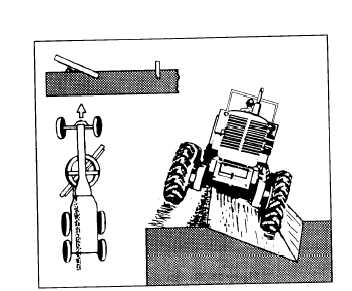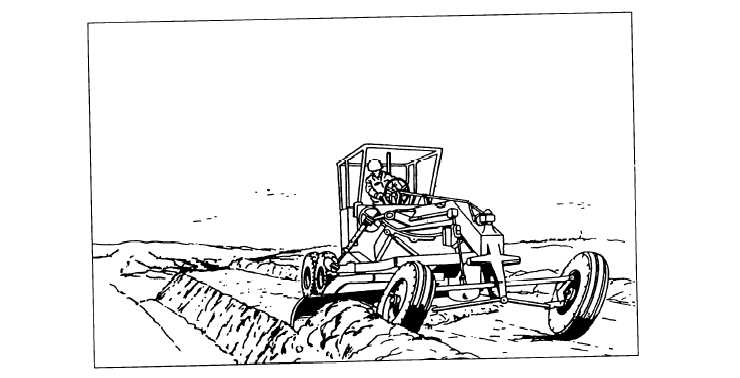Figure 10-25.-Ditch cut.
Ditch Cut
The first step performed on a road project is to
establish drainage normally through the use of a ditch.
To construct a ditch, you must know how to cut a straight
ditch line and make sure the ditch line stakes fit the
plans.
The first cut to make is the marking cut. The
marking cut is a 3- to 4-inch-deep cut made with the toe
of the blade (fig. 10-23). The toe of the blade is
positioned in line with the outside edge of the front tire.
For cutting, the blade pitch is adjusted until the top and
bottom edges of the moldboard are aligned
Perpendicular to the ground. The marking cut is a
technique used for easier grader control and straighter
ditches.
After the marking cut, position the blade at about a
45-degree angle to perform an efficient ditch cut (fig.
10-24). The toe of the blade is positioned in line with
the center of the lead tire, while the heel of the blade is
raised to allow the windrow to form either inside or
outside the rear wheels (fig. 10-25). It maybe necessary
to remove the scarifier teeth to keep them from
interfering with the blade.
NOTE: Do not forget to lean the top of the front
wheels in the direction of the flow of the cut material.
After each ditch cut, the material should be
windrowed or spread towards the middle of the road,
away from the ditching operations. This technique is
called shoulder pickup. To spread the windrow away
from the ditch, position the front grader tire on the inside
of the windrow. Side shift the blade and the circle so the
toe is positioned to the outside of the windrow, as shown
in figure 10-26. The heel is positioned to allow the
windrow to side cast inside the rear tandem tires. The
purpose of the shoulder pickup is to move the windrow
away from the foreslope of the ditch.
Figure 10-26.-Shoulder pickup.
10-11



